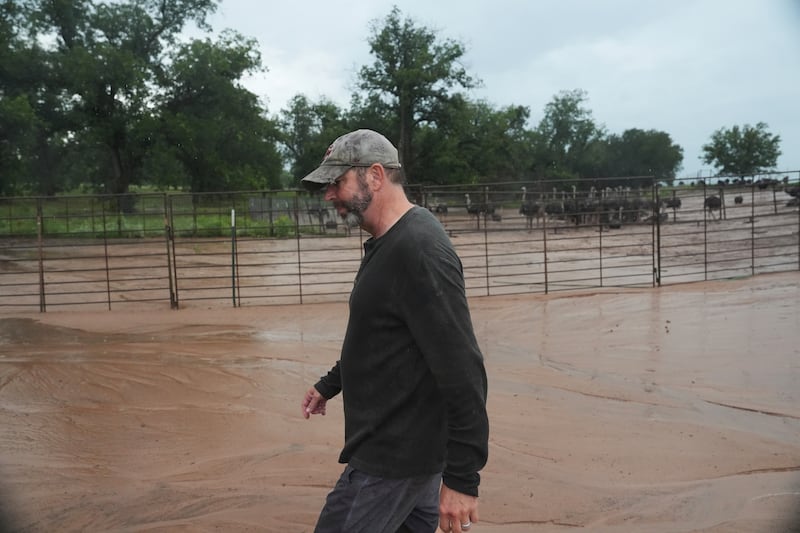New research shows how a variety of natural disasters are impacting the nation’s food supply, presenting costly challenges to ranchers and farmers who are already struggling.
The full report covers over 3,000 U.S. counties and all 50 states, with a detailed breakdown of expected annual agricultural losses (total and per-farm), expected annual loss rate, total farms and total agricultural value, and the most damaging hazard in each location.
As an example, in April 2025, a devastating weather system massively flooded corn, rice, soybean and wheat crops in eastern Arkansas, affecting 31% of agricultural acreage in the region and inflicting an estimated $99 million in damage.
Similarly, the agricultural industry in North Carolina was hit hard by Hurricane Helene in late September 2024, prompting the U.S. Department of Agriculture to grant $221.2 million in federal disaster assistance block grants to help the industry rebuild.
Overall, the data compiled on behalf of Traceone shows that FEMA estimates natural hazards cause an average of $3.5 billion in agricultural losses annually, with drought being the single largest contributor.
Drought alone accounts for more than half of these losses, averaging $1.9 billion per year. The financial impact of drought underscores its threat to farmers, particularly in regions reliant on water-intensive crops.
The analysis shows other significant contributors to agricultural losses include hurricanes, which cause $485 million in annual losses, along with flooding ($437 million) and cold waves ($286 million).

Events such as hailstorms, strong winds and heat waves collectively add hundreds of millions in losses to the yearly toll. While less frequent, disasters like tornadoes, winter weather and wildfires also contribute to economic havoc in certain regions.
The deadly disaster of drought
Drought is a persistent challenge on the West Coast, particularly in California, as well as the Southwest and parts of the Southern Plains, where water scarcity hampers crop yields and livestock production.
In fact, California leads the nation in agricultural losses due to natural hazards, with farms in the state incurring an estimated $1.3 billion in losses annually.

This figure dwarfs losses in other states, with drought being the most significant hazard affecting California’s vast agricultural sector. On a per-farm basis, California reports an average loss of $20,528 — the highest of any state — reflecting its reliance on high-value crops such as fruits, nuts and vegetables, which are particularly vulnerable to water shortages.
Texas comes in second, facing an expected annual loss of $205 million, with droughts again being the primary driver.
The impact on Utah
Drought is the main culprit causing agricultural losses and strain on ranchers in Utah.
The report highlights these grim facts about Utah impacts:
- Total expected annual loss: $791,000
- Expected annual loss per farm: $46
- Total farms: 17,300
- Total agriculture value: $2.4 billion
Drought has plagued Utah for two decades, driving down the levels of the Great Salt Lake, sapping reservoir levels, compromising spring runoff and putting a high burden on growers and ranchers.
Envision Utah in partnership with Utah Water Ways, the Utah Division of Water Resources and the Office of the Great Salt Lake Commissioner conducted a survey this year which showed more than half the people in Utah do not believe there will be enough water to meet the needs of users 20 years from now.
“I think what we see there is people recognizing that we’re in a desert state and that water does seem to vary from our water levels in our communities and in the mountains and lakes and our snowpack,” said Jason Brown, executive vice president of communications and education at Envision Utah at the time.
“The reality is we are a desert state, and we are going to have to make some changes to how we use our water if we want to make sure that we have enough for the future. And so for people to be recognizing that this is going to be a challenge is honestly probably a good thing,” Brown said. “It is probably a good place for us to be, living in the state that we live.”
But there is hope with innovative technology.
An Emery County farmer/rancher invested in a Hydrogreen technology, incurring upfront costs of close to $700,000. The benefits are an accelerated growth cycle that uses less than one tenth of the water necessary for growing feedstock. It has kept this family in business, even though it was a gamble at the outset.
The drought has been hard, but the Utah Department of Agriculture and Food is doing its best via agricultural optimization grants and other financial assistance for farmers and ranchers.
“Utah’s farmers and ranchers have always been resilient, but years of drought are taking a real toll on both operations and families. When water is scarce, feed and water hauling costs increase dramatically and every decision becomes harder, from planting and grazing to keeping livestock healthy and productive,“ said spokesman Caroline Hargraves.
“We’ve seen firsthand how invested our producers are in adapting to these challenges and in investing their own money to implement water optimization projects. We are committed to supporting them through programs that improve water efficiency, strengthen local food systems, provide emergency loans and help keep Utah agriculture viable.”


